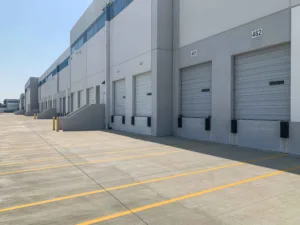Ever wonder where the real money is being made in self-storage investing these days? If you’re like most investors, you probably stick to the tried-and-true markets that everyone flocks to. But the smart money is going elsewhere. It’s finding the hidden gems – the emerging markets that no one is paying attention to yet. Places where opportunity is ripe for the picking if you know where to look. In this article, we’re going to open your eyes to the untapped potential in self-storage and show you the markets poised for serious growth that you’ve probably never considered. Get ready to go beyond the obvious and discover where the future of self-storage investing really lies. The profits you’ve been missing out on are waiting to be uncovered.
Secondary Cities: Look Past Major Metros
Secondary cities, like mid-sized towns in the Sun Belt and Midwest, offer huge potential for self-storage investors looking to diversify. Major metros may seem appealing, but competition is fierce and prices are high. Secondary markets are where the smart money is moving.
- Lower costs of living and real estate mean lower overhead and higher profits. Facilities and land are more affordable, so you can charge lower rents but still earn strong returns.
- Less competition means more opportunities. Secondary cities typically have fewer self-storage facilities per capita, so you face less competition for customers and can more easily find prime locations.
- Strong demand without saturation. While major cities struggle with overbuilding, secondary markets have solid demand for storage space but far less supply. More people are moving to smaller cities, and they still need a place to store their stuff!
- Stability and growth. Secondary cities provide a balance of stability and expansion. Populations and economies are growing at a steady pace, fueling demand for storage, but without the risk of a bubble.
- Hands-on management. If you prefer to be closely involved, secondary markets are ideal. Facilities are more accessible, and you can keep a finger on the pulse of your local market.
This is a major factor into how much it costs to start a storage unit business. The hidden gems are out there if you know where to look. Do your research, find the right secondary city for you, and reap the rewards of this untapped sector. Smart money is on the move—will you join it?
University Towns: Bet on Growing Student Populations
University towns are an emerging market with serious potential. Think about it – college towns have built-in demand drivers with growing student populations. Between 2010 and 2015, Greeley, CO, home to the University of Northern Colorado, had a population growth rate of 12.19%, making it the fastest-growing college town.
In the US, there were approximately 19.7 million college students in 2020, according to the National Center for Education Statistics. These young people need places to store their belongings, especially over summer and winter breaks.
College towns’ populations are typically under 55, meaning most residents are renters, not homeowners. Renters need storage solutions since they have limited space. Universities also help keep small and mid-size cities’ economies thriving, which translates into steady business for storage facilities.
Some tips for investing in college town storage units:
•Focus on towns with growing student enrollment and a high percentage of renters. Look at population growth rates and the percentage of residents under age 55.
•Target schools with a high percentage of out-of-state or international students. These students are more likely to need storage over breaks since traveling home may not be possible.
•Market to students and parents. Run social media ads targeting college-age students and parents of students. Offer student discounts and move-in specials.
•Provide amenities that cater to students like 24-hour access, carts for moving heavy items, packing supplies, and security features like video monitoring.
•Consider offering additional services like U-Haul rentals, boxes, and moving supplies which can provide extra revenue streams.
College towns are an untapped market set to take off. With some smart investing and the right amenities and marketing, self storage facilities in these towns can tap into serious growth potential. The opportunities for investment are many, so why not take a chance on this emerging market?
Coastal Communities: Ride the Wave of Retiree Relocation
Coastal communities are magnets for retirees looking to settle into a relaxing beach lifestyle. As the population ages, towns along the coasts of Florida and South Carolina have become hotspots for retirement relocation.
The Appeal of Beach Towns
For many retirees, living near the ocean is a lifelong dream. Coastal towns offer an idyllic setting with resort-style amenities, opportunities for recreation, and a slower pace of life. Popular activities for retirees include:
- Beachgoing and swimming
- Boating and fishing
- Golfing at scenic courses
- Exploring local shops and dining along boardwalks
The natural beauty and leisurely lifestyle of beach towns are major draws for retirees seeking an enjoyable and affordable place to spend their golden years.
Top Retirement Destinations
Several beach communities in Florida and South Carolina rank high on lists of the best places to retire.
- Sarasota, Florida is an art and culture hub with 35 miles of coastline.
- Fort Myers, Florida has an average of over 2,800 hours of sunshine per year and over 100 golf courses.
- Hilton Head Island, South Carolina features 12 miles of beaches, over 250 restaurants, and an array of recreational activities.
- Beaufort, South Carolina is a historic town with antebellum architecture, waterfront parks, and nearby sea islands.
For those looking to retire abroad, beach towns in Mexico’s Baja California offer resort amenities at a lower cost of living. Places like La Paz, Loreto, and Todos Santos attract ex-pats with their natural scenery, outdoor recreation, and vibrant local culture.
The opportunities for an active lifestyle, natural surroundings, and community engagement make coastal retirement destinations highly sought after. For self-storage investors, beach towns present an opportunity to provide storage solutions for people making a move to paradise.
Military Bases: Target Areas Surrounding Major Installations
Military bases are ideal locations for self-storage investments. The areas surrounding major installations typically have a high concentration of military personnel and their families, creating strong demand for storage space.
Look for Bases with Stable Missions
Seek out bases with missions that are unlikely to change in the near future, such as training facilities, research labs, or headquarters. Bases that frequently deploy personnel overseas also make good targets, as service members often need storage solutions when they are away. Some of the largest, most stable bases include Fort Bragg, Fort Hood, Camp Pendleton, and Joint Base Lewis-McChord.
Vibrant Local Economies
While the military base is the anchor, look for areas with vibrant local economies that aren’t solely dependent on the installation. Nearby cities or towns with growing populations, low unemployment, and industries like technology, education, or healthcare will further fuel the need for self-storage. The demand from military and civilian customers provides stability and helps hedge your investment.
Partner With National Operators
Rather than developing and operating the storage facility yourself, consider partnering with a national self-storage company like Extra Space Storage. They have the expertise to choose an ideal location, design a state-of-the-art facility, and effectively market to military members and the surrounding community. You provide the capital and share in the profits, while they handle the day-to-day operations. It’s a win-win.
Serve the Military Community
Be sure to tailor your services to the needs of military members. Offer amenities like 24-hour access, security features like video monitoring and keypad entry, and month-to-month leases with flexible terms. Military discounts and partnerships with on-base organizations help build goodwill. By serving the military community, you’ll establish a reputation that pays dividends through word-of-mouth referrals and repeat customers.
Investing in self-storage around military installations can be very rewarding. Look for the strongest bases, vibrant local economies, national operators as partners, and serve the military community. Do your due diligence, and you’ll be poised to capitalize on this emerging opportunity.
FAQs: Your Questions About Self-Storage Investing, Answered
Investing in self-storage may seem straightforward, but there are a few aspects you should consider before diving in. Here are some of the most frequently asked questions about self-storage investing and how to think about them:
What are the risks?
While self-storage investments are usually secure, no investment is 100% risk-free. Some things to keep in mind:
- Market conditions can change. Do your research on the local area and economy to determine the demand for storage units. Areas with stable or growing populations and business activity are better bets.
- Costs may increase. Though self-storage has low operating costs, property taxes, insurance, and maintenance fees can go up over time. Make sure to budget for potential cost increases.
- Tenants may default. Though rare, some tenants may stop paying rent. Carefully screen tenants and consider requiring a deposit to minimize this risk.
How much does it cost to get started?
The initial investment depends on whether you want to buy an existing facility or build your own. Buying an existing facility will likely require a down payment of at least 25-30% of the total cost. Building a new facility can cost $50,000-$100,000 per unit or more, depending on the location and features. REITs offer a more affordable way to invest in self-storage with a lower initial outlay.
What kind of returns can I expect?
Self-storage facilities generally offer good returns due to steady demand and low costs. You can expect annual returns of 10-15% or more over the long run. REITs also offer competitive returns, often 7-12% per year. The key is to find facilities in areas with limited supply and growing demand.
How hands-on do I need to be?
Self-storage can be an easy investment to manage remotely if you hire a property manager. However, more hands-on investors can potentially boost returns by directly managing the facility and keeping costs low. REITs are completely hands-off, as the REIT managers handle all aspects of the investments.
The self-storage market offers many promising opportunities for investors. By understanding the risks, costs, returns, and management involved, you can make an informed decision about whether self-storage investing is right for you.
Conclusion
So there you have it, a glimpse into the future of self-storage investing. While the major markets will always remain appealing, the real moneymakers are in emerging areas. Do your homework, find the hidden gems, and get in on the ground floor. In a few years, you’ll be smiling as you see your early investments paying off big time. The opportunities are out there if you’re willing to look beyond the obvious. Why follow the crowd when you can blaze your own trail? Take a chance on an up-and-coming market and you might just discover the next self-storage goldmine. The rewards go to the bold, so what are you waiting for? Adventure awaits!





